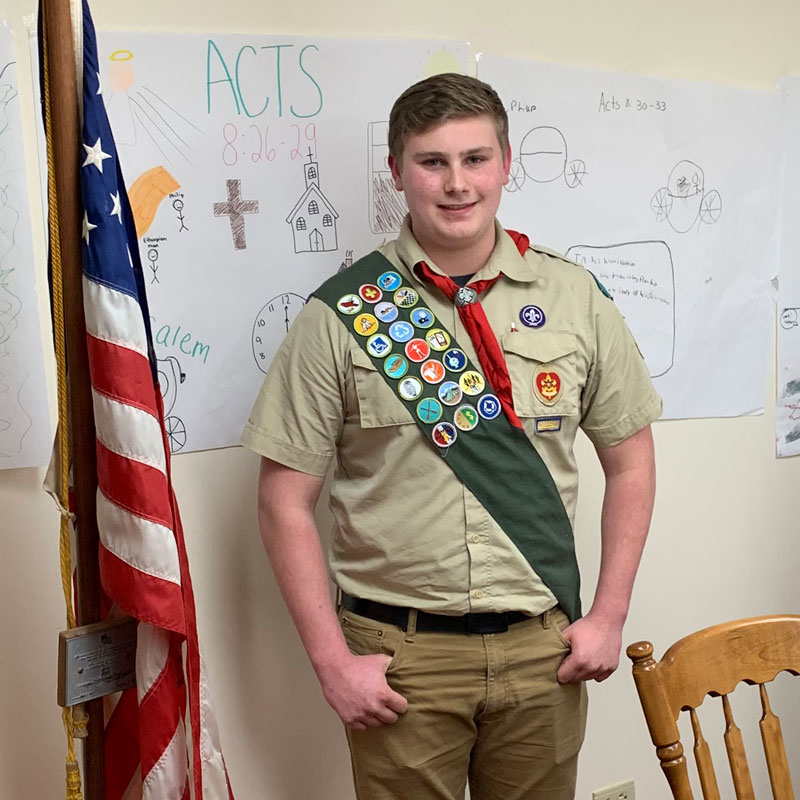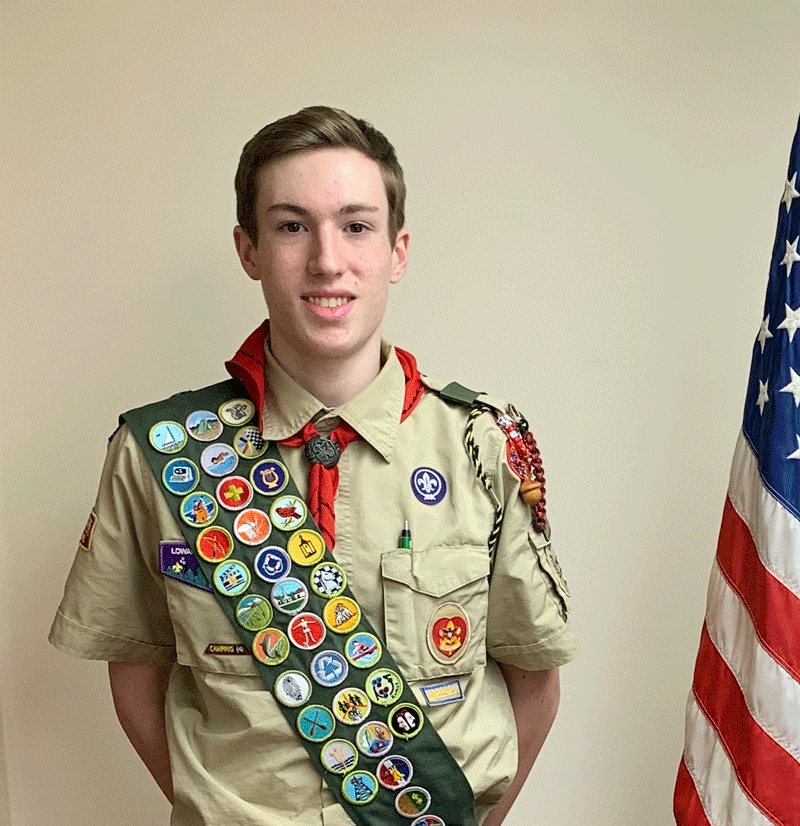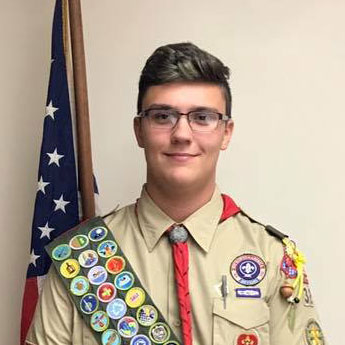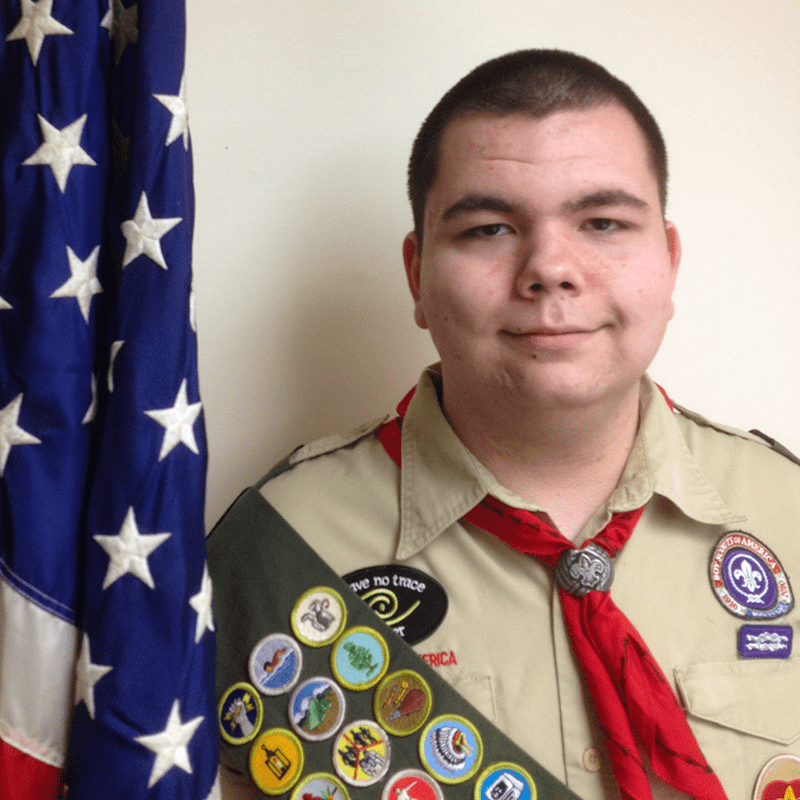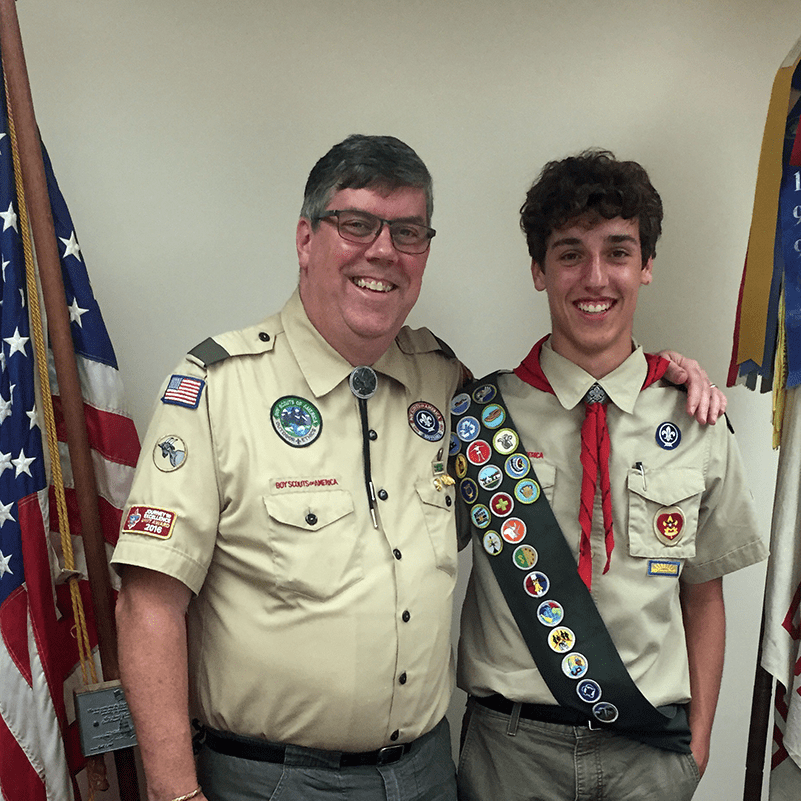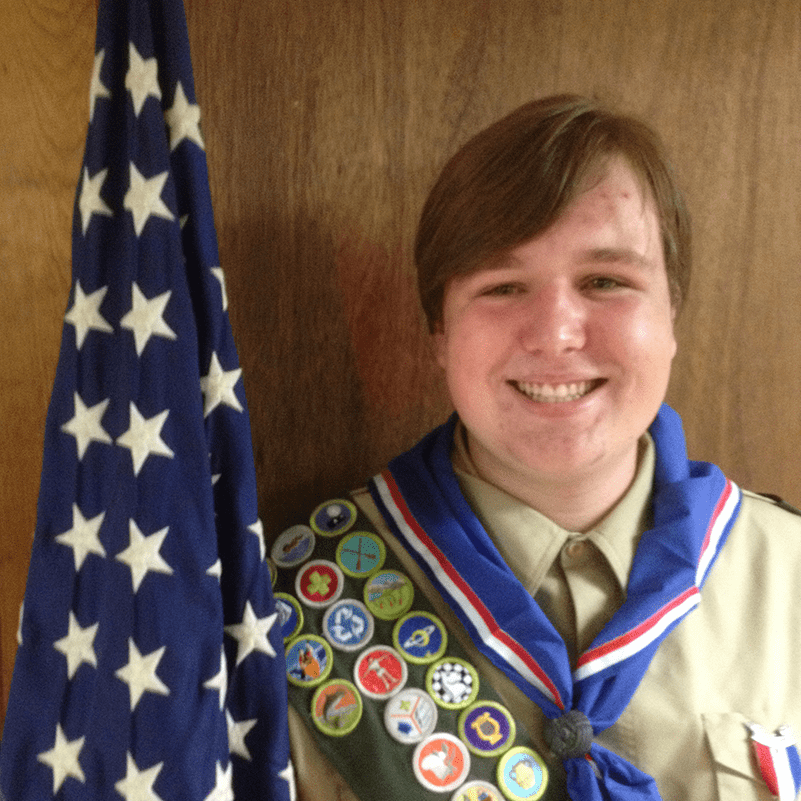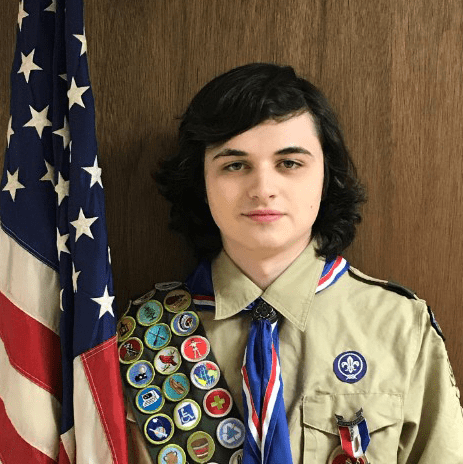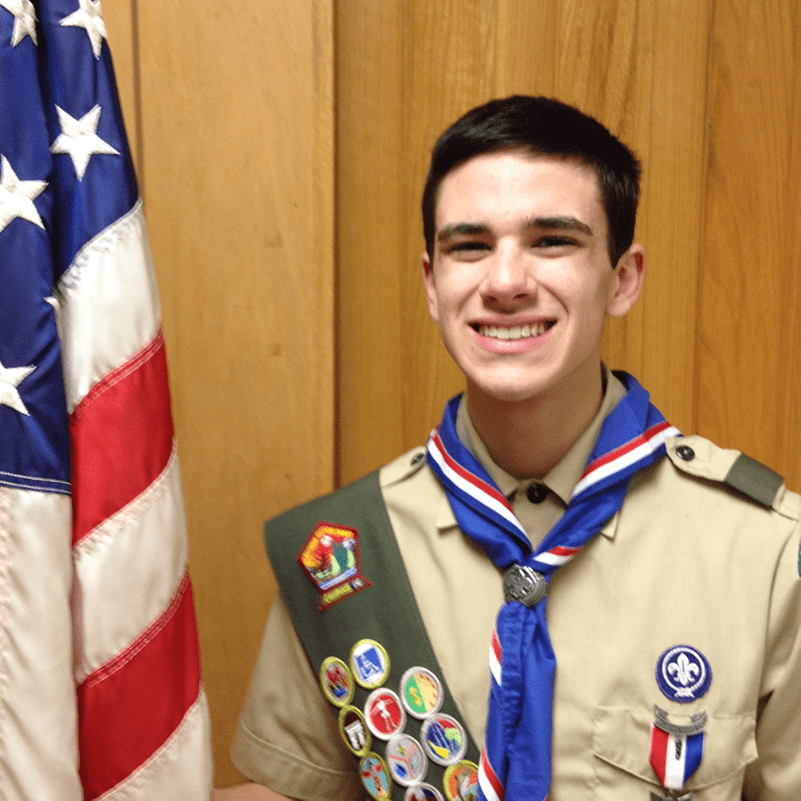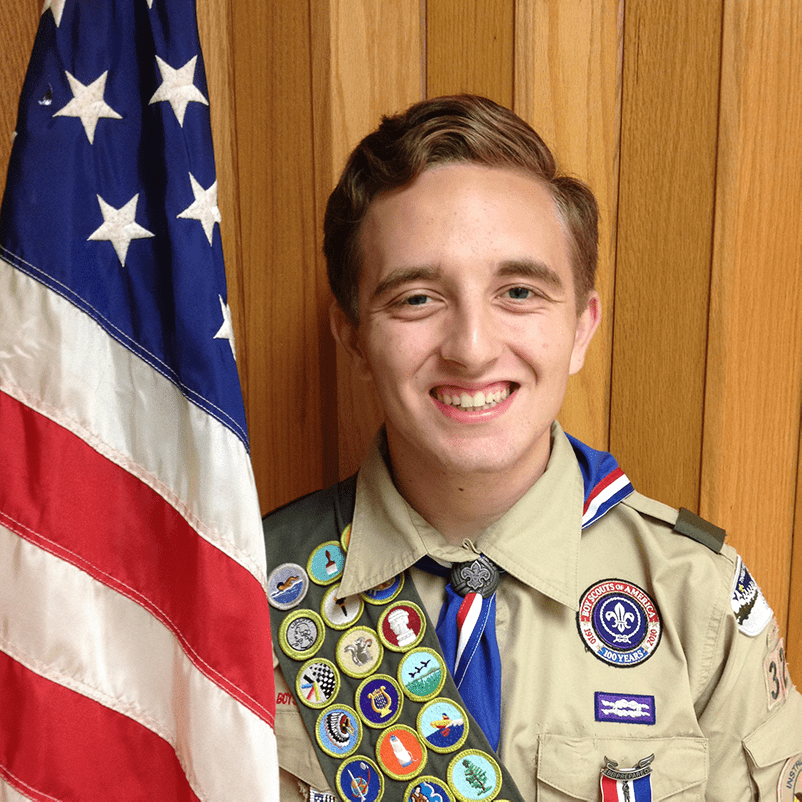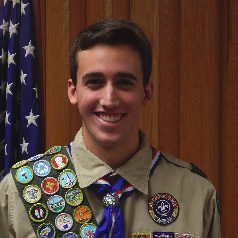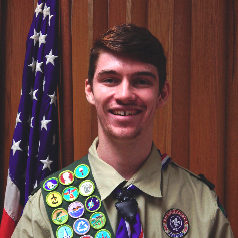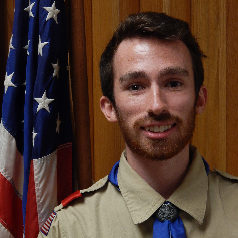
Eagle Scouts Tyler Sondergaard, Michael Meyer, Austin Miller, Robbie Krueger, and Matthew Smith
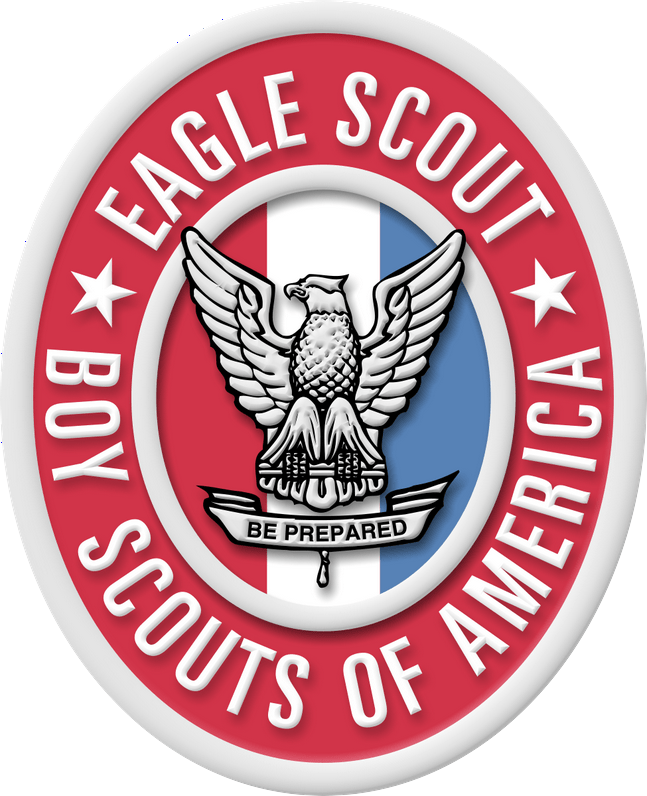
The Path to Eagle Scout
So, you want to be an Eagle Scout?
Eagle Scout is the highest advancement rank in Boy Scouting.
The award is more than a badge. It’s a state of being. You are an Eagle Scout—never were. You may receive the badge as a boy, but you earn it every day as a man. In the words of the Eagle Scout Promise, you do your best each day to make your training and example, your rank and your influence count strongly for better Scouting and for better citizenship in your troop, in your community, and in your contacts with other people. And to this you will pledge your sacred honor.
Troop 32 is proud of our Eagle Scouts
Our Eagle Scouts (see table below) have completed the following requirements:
Rank Advancement
- Scout: The Scout rank is the first rank of Boy Scouts. To complete the rank, a new Scout must complete a Boy Scout application and join a Troop. He must also be able to repeat the Pledge of Allegiance, demonstrate the Scout sign, salute and handshake, tie a square knot, and describe the Scout badge. Finally, he must understand and agree to live by the Scout Oath, Law, Motto, Slogan, and the Outdoor Code.
- Tenderfoot: To earn the Tenderfoot rank, a Scout must complete requirements dealing with camping, hiking, the American Flag, the Scout Oath, Law, Motto, and Slogan, the patrol method, the buddy system, physical fitness, plants, and first aid.
- Second Class: To earn the Second Class rank, a Scout must complete requirements dealing with orienteering, camping, wood tools, cooking, a flag ceremony, a service project, wildlife, first aid, swimming, drug and alcohol prevention, and personal safety.
- First Class: To earn the First Class rank, a Scout must complete requirements dealing with orienteering, camping, cooking, constitutional rights, plants, knots, lashings, swimming, recruitment, and the internet.
- Star: The requirements for the Star rank are much different than the previous ranks. To earn the Star rank, a Scout must be active in their Troop and Patrol for at least 4 months after earning First Class, earn 6 merit badges, including 4 from those required for Eagle, complete service projects totaling at least 6 hours of work, and serve in a leadership position in the Troop for at least 4 months.
- Life: To earn the Life rank, a Scout must be active in their Troop and Patrol for at least 6 months after earning Star, earn 5 additional merit badges beyond those earned for Star (total of 11), including 3 more from those required for Eagle, complete service projects totaling at least 6 hours of work, and serve in a leadership position in the Troop for at least 6 months.
- Eagle: To earn the Eagle rank, a Scout must be active in their Troop and Patrol for at least 6 months after earning Life, earn a total of 21 merit badges, including 12 required merit badges (First Aid, Citizenship in the Community, Citizenship in the Nation, Citizenship in the World, Communications, Personal Fitness, Emergency Preparedness OR Lifesaving, Environmental Science, Personal Management, Swimming OR Hiking OR Cycling, Camping, and Family Life), serve in a leadership position in the Troop for at least 6 months, and complete an Eagle Scout service project which is helpful to any religious institution, school, or community.
Eagle Required Merit Badges
As a Life Scout, serve six months in a troop leadership position.
Serve 6 Months in a Position of Leadership
While a Life Scout, serve actively in your unit for a period of six months in one or more of the following positions of responsibility. (Positions must be served after your Life board of review date.)
- Boy Scout troop. Patrol leader, assistant senior patrol leader, senior patrol leader, Venture patrol leader, troop guide, Order of the Arrow troop representative, den chief, scribe, librarian, historian, quartermaster, junior assistant Scoutmaster, chaplain aide, instructor, webmaster, or Leave No Trace trainer.
- Varsity Scout team. Captain, cocaptain, program manager, squad leader, team secretary, Order of the Arrow team representative, librarian, historian, quartermaster, chaplain aide, instructor, den chief, webmaster, or Leave No Trace trainer.
- Venturing crew/ship. President, vice president, secretary, treasurer, quartermaster, historian, den chief, guide, boatswain, boatswain’s mate, yeoman, purser, storekeeper, webmaster, or Leave No Trace trainer.
- Lone Scout. Leadership responsibility in his school, religious organization, club, or elsewhere in his community.
Eagle Project
While a Life Scout, plan, develop, and give leadership to others in a service project helpful to any religious institution, any school, or your community. (The project must benefit an organization other than Boy Scouting.) A project proposal must be approved by the organization benefiting from the effort, your unit leader and unit committee, and the council or district before you start. You must use the Eagle Scout Service Project Workbook, BSA publication No. 512-927, in meeting this requirement.
Participate in a Unit Leadership Conference
Meet with the Scoutmaster to review that the requirements for rank of Eagle Scout have been accomplished prior to Board of Review.
Eagle Scout Board of Review
The Board of Review for the Eagle Rank is different from the other Boards of Review in which the Scout has participated. The members of the Board of Review are not all from his Troop Committee. Introductions are essential, and a few “break in" questions may be appropriate.
At this point, the goal is to understand the Scout’s full Scouting experience, and how others can have similar meaningful Scouting experiences. Scouting principles and goals should be central to the Scout’s life; look for evidence of this.
Although this is the final rank, this is not the end of the Scouting trail; “Once an Eagle, always an Eagle." Explore how this Eagle Scout will continue with Scouting activities, and continued service to his home, church, and community.
The approximate time for this Board of Review should be 30 – 50 minutes.
